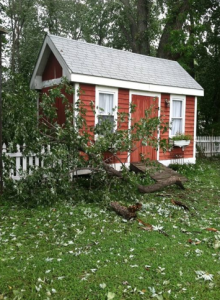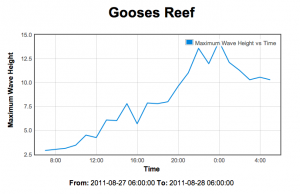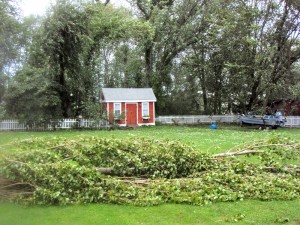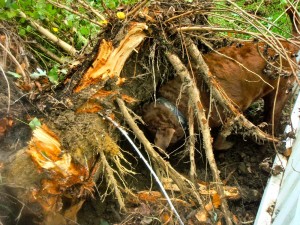Over the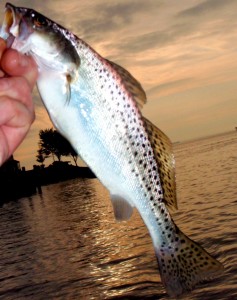 last three days I’ve caught fifty speckled trout. That’s forty-eight more than I’ve caught in the previous five years here on the Chesapeake Bay. I’m sure I could have caught a few in years past had I targeted them, or if I fished farther south in the marshes, but that isn’t necessary right now because, for whatever reason, the trout are here in force. This week, Maryland fishermen have reported speckled trout as far north as Matapeake Pier and well into the Eastern Bay rivers. Also known as spotted sea trout, or simply “specks,” these colorful fish were once plentiful throughout the Bay. Their numbers have been down in recent years, but if this season is any indicator, things are looking up. Adult specks are migratory, usually moving into the Bay in late April to spawn before swimming farther north toward Maryland. Since they prefer warm, salty water, they’re usually gone by mid-November. They aren’t true trout but are related to croakers and drum, and will sometimes make a groaning or grunting sound when caught. Here’s what they sound like CLICK HERE and here’s how to catch them.
last three days I’ve caught fifty speckled trout. That’s forty-eight more than I’ve caught in the previous five years here on the Chesapeake Bay. I’m sure I could have caught a few in years past had I targeted them, or if I fished farther south in the marshes, but that isn’t necessary right now because, for whatever reason, the trout are here in force. This week, Maryland fishermen have reported speckled trout as far north as Matapeake Pier and well into the Eastern Bay rivers. Also known as spotted sea trout, or simply “specks,” these colorful fish were once plentiful throughout the Bay. Their numbers have been down in recent years, but if this season is any indicator, things are looking up. Adult specks are migratory, usually moving into the Bay in late April to spawn before swimming farther north toward Maryland. Since they prefer warm, salty water, they’re usually gone by mid-November. They aren’t true trout but are related to croakers and drum, and will sometimes make a groaning or grunting sound when caught. Here’s what they sound like CLICK HERE and here’s how to catch them.
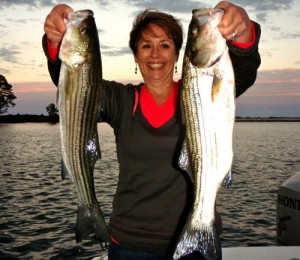 No, this isn’t an entry about breakfast cereal. It’s about skinny-water fishing on the Chesapeake Bay where conditions are perfect for the snap, crackle, and pop of topwater lures. That’s the good news. The bad news is that muddy water has all but eliminated fishing in the main stem of the Bay. The tributary rivers are clearing, but water in the main channel remains deeply stained. Satellite photos show a sediment plume stretching all the way down to the mouth of the Patuxent River. It’s too trashy to troll, too muddy to catch bait, and too dirty to bottom fish. Thank goodness for the versatility of light tackle! While many anglers are sitting on their hands lamenting the impossible conditions, light tackle fishermen are enjoying a banner fall. Since the shallow-water bite is tasty, I thought it might be interesting to look at three basics premises of topwater casting – let’s call ’em snap, crackle, and pop. Read More!
No, this isn’t an entry about breakfast cereal. It’s about skinny-water fishing on the Chesapeake Bay where conditions are perfect for the snap, crackle, and pop of topwater lures. That’s the good news. The bad news is that muddy water has all but eliminated fishing in the main stem of the Bay. The tributary rivers are clearing, but water in the main channel remains deeply stained. Satellite photos show a sediment plume stretching all the way down to the mouth of the Patuxent River. It’s too trashy to troll, too muddy to catch bait, and too dirty to bottom fish. Thank goodness for the versatility of light tackle! While many anglers are sitting on their hands lamenting the impossible conditions, light tackle fishermen are enjoying a banner fall. Since the shallow-water bite is tasty, I thought it might be interesting to look at three basics premises of topwater casting – let’s call ’em snap, crackle, and pop. Read More!
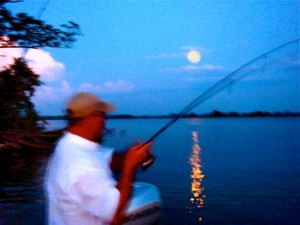 The main channel of the Chesapeake is currently closed to most fishing due to dense, muddy water. Debris fields containing trees, logs, railroad ties, even 55-gallon drums and partially-submerged refrigerators make it nearly impossible to navigate anywhere near the Bay Bridge. The Susquehanna River remains near flood stage, so there is more bad water and trash to come. What’s a light tackle fisherman to do? Go east, young man – go east and go shallow. If you aren’t fishing the shoreline right now, you’re missing some of the most spectacular top-water action of the year. September is almost always a great month for top-water fishing, and it’s even better now since fish have been pushed out of the muddy waters of the channel toward the shorelines. Better yet, the high water makes it even easier to get our boats in tight and fish the current swept banks. Read More!
The main channel of the Chesapeake is currently closed to most fishing due to dense, muddy water. Debris fields containing trees, logs, railroad ties, even 55-gallon drums and partially-submerged refrigerators make it nearly impossible to navigate anywhere near the Bay Bridge. The Susquehanna River remains near flood stage, so there is more bad water and trash to come. What’s a light tackle fisherman to do? Go east, young man – go east and go shallow. If you aren’t fishing the shoreline right now, you’re missing some of the most spectacular top-water action of the year. September is almost always a great month for top-water fishing, and it’s even better now since fish have been pushed out of the muddy waters of the channel toward the shorelines. Better yet, the high water makes it even easier to get our boats in tight and fish the current swept banks. Read More!
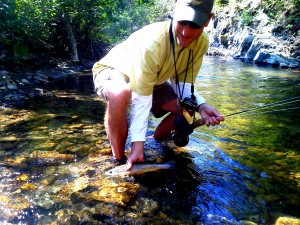 Stream fishing on Labor Day is one of my longstanding traditions. Looking back through the archives of ChesapeakeLightTackle.com, I see that I fished the upper reaches of the Potomac last year, Deer Creek the year before, and the Nolichucky River in Tennessee in 2008. This Labor Day’s stream fishing trip took me out to Montana where I fished in some of the most beautiful country in the world.
Stream fishing on Labor Day is one of my longstanding traditions. Looking back through the archives of ChesapeakeLightTackle.com, I see that I fished the upper reaches of the Potomac last year, Deer Creek the year before, and the Nolichucky River in Tennessee in 2008. This Labor Day’s stream fishing trip took me out to Montana where I fished in some of the most beautiful country in the world.
Dianne and I joined our friends Chris and Paige Montague at their home in Billings late last Wednesday night. To say these are cool folks would be an understatement. Chris, who runs his family’s jewelry store in downtown Billings, is an avid fisherman, conservationist, and board member of the Montana Land Reliance. Paige’s company, MyTopo.com, creates custom topographic maps to order. Both Chris and Paige are bluegrass music fans and outdoor enthusiasts – yes, our kind of people! Read More!
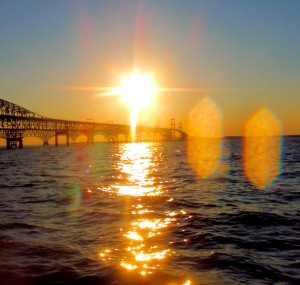 We interrupt this hurricane blog to bring you a fishing report. Yes, this IS a website dedicated to light tackle fishing, and on most Sunday evenings, that’s what I do. I spent most of the day singing the lumberjack song with chainsaw in hand, cutting up the trees and limbs that fell in our yard. After seeing all the trees down around Kent Island today, I’m surprised that we didn’t have more damage than we did. We are also fortunate that the only complete tree that was uprooted in our yard fell harmlessly instead of taking out our picket fence or part of the church next door. We worked on the house and yard most of the afternoon, finishing about 5:00 PM. That left just enough time to go fishing.
We interrupt this hurricane blog to bring you a fishing report. Yes, this IS a website dedicated to light tackle fishing, and on most Sunday evenings, that’s what I do. I spent most of the day singing the lumberjack song with chainsaw in hand, cutting up the trees and limbs that fell in our yard. After seeing all the trees down around Kent Island today, I’m surprised that we didn’t have more damage than we did. We are also fortunate that the only complete tree that was uprooted in our yard fell harmlessly instead of taking out our picket fence or part of the church next door. We worked on the house and yard most of the afternoon, finishing about 5:00 PM. That left just enough time to go fishing.
I launched Thunder Road at Matapeake and ran north to the Bay Bridge. Winds were about 12 knots out of the west when I started, but came down to near zero as the evening wore on. The water was stained, but not as much as I expected. Water temperature and air temperature were exactly the same at 76 degrees. That’s significant because the water has been well into the 80s. It means there was a lot of top-to-bottom mixing due to the storm. I did expect the fish to be freaked out and hunkered down, and they were. I gave the Bay Bridge a good shot, but only caught one little rockfish. I thought the fish might be deep, so I started my fishing trip looking for more of a winter pattern. I marked a few fish deep, but I couldn’t get them to bite. I moved to the shallow pilings and there wasn’t anything going on there either. Read More!
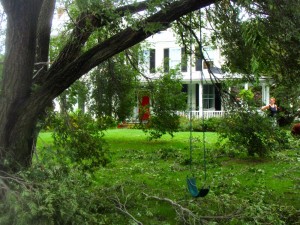 Most of the damage here on the island came from falling trees. Since the wind is still gusting into the 40 mile-per-hour range, and the ground is completely saturated, more trees could fall. I’ve heard of a few houses and stores that were hit by flying debris, tree limbs, etc. but it sounds like most of the island came through the storm fine. UPDATE: 12:36 PM – One confirmed death in Queenstown due to a falling tree leading to a chimney collapse. We lost power here in historic Stevensville at 10:14 PM, but it was back on at 9:00 AM.
Most of the damage here on the island came from falling trees. Since the wind is still gusting into the 40 mile-per-hour range, and the ground is completely saturated, more trees could fall. I’ve heard of a few houses and stores that were hit by flying debris, tree limbs, etc. but it sounds like most of the island came through the storm fine. UPDATE: 12:36 PM – One confirmed death in Queenstown due to a falling tree leading to a chimney collapse. We lost power here in historic Stevensville at 10:14 PM, but it was back on at 9:00 AM.
Since the storm stayed off the coast and winds have stayed from the northeast, a storm surge never materialized, but there were some very big waves on the Bay. I’m attaching a graph from the Gooses Reef Buoy. A giant 29-foot wave was recorded by First Landing Buoy at the mouth of the Bay near Cape Henry. That may be the biggest wave ever recorded for the Chesapeake.
I will eventually get out and look around, 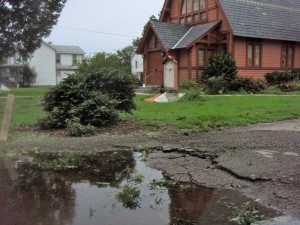 but I think it’s wise to keep the roads clear for emergency vehicles and highway crews right now. We still hear sirens from time to time. The Bay Bridge has reopened under Phase II wind restrictions. Here’s some shots of our house and the immediate area.
but I think it’s wise to keep the roads clear for emergency vehicles and highway crews right now. We still hear sirens from time to time. The Bay Bridge has reopened under Phase II wind restrictions. Here’s some shots of our house and the immediate area.



